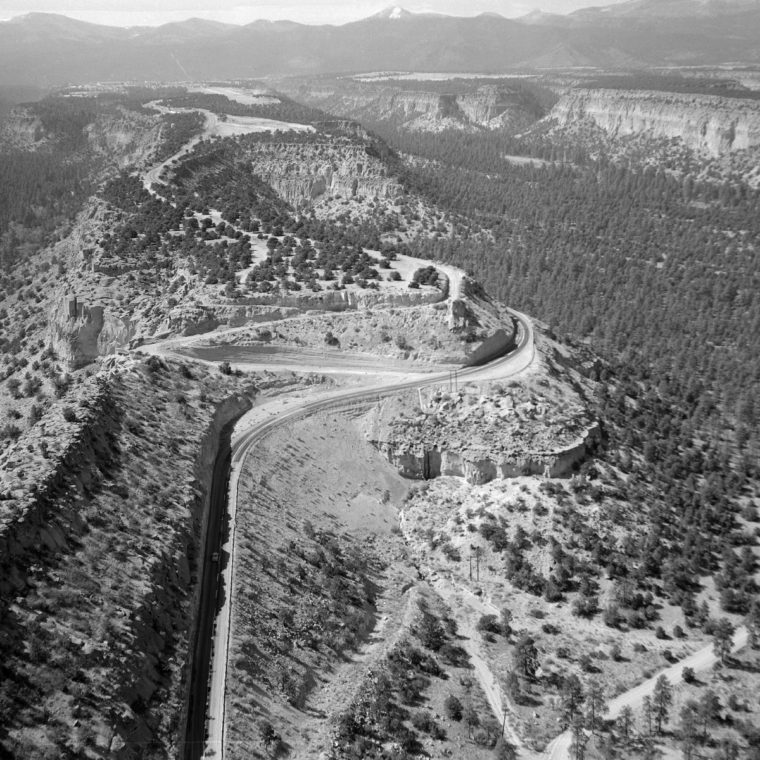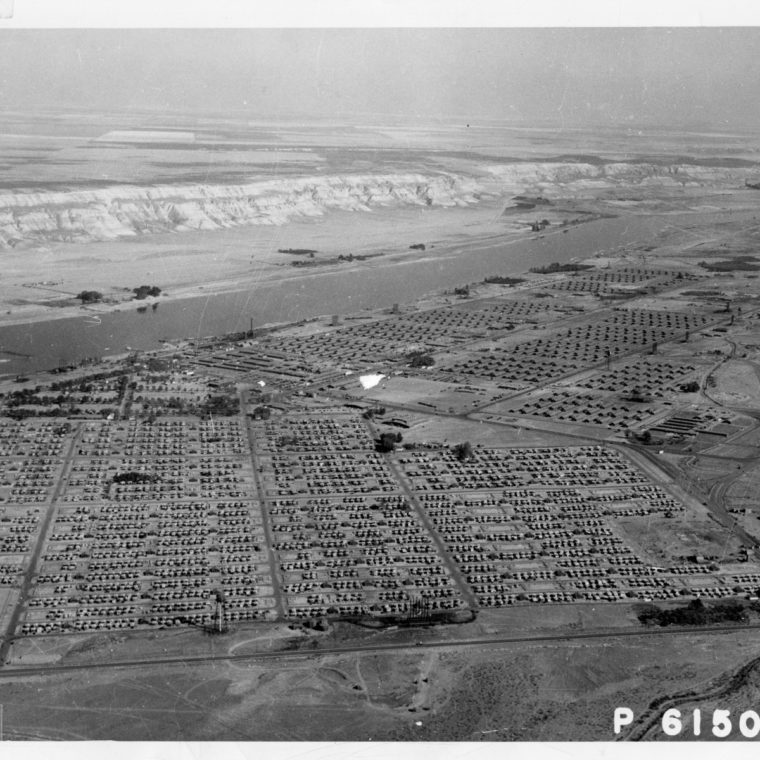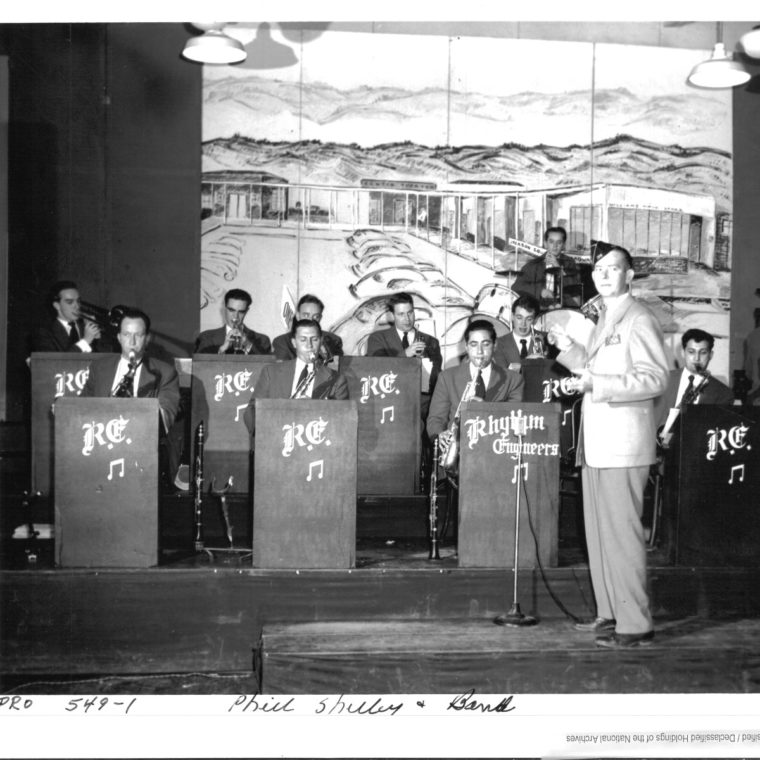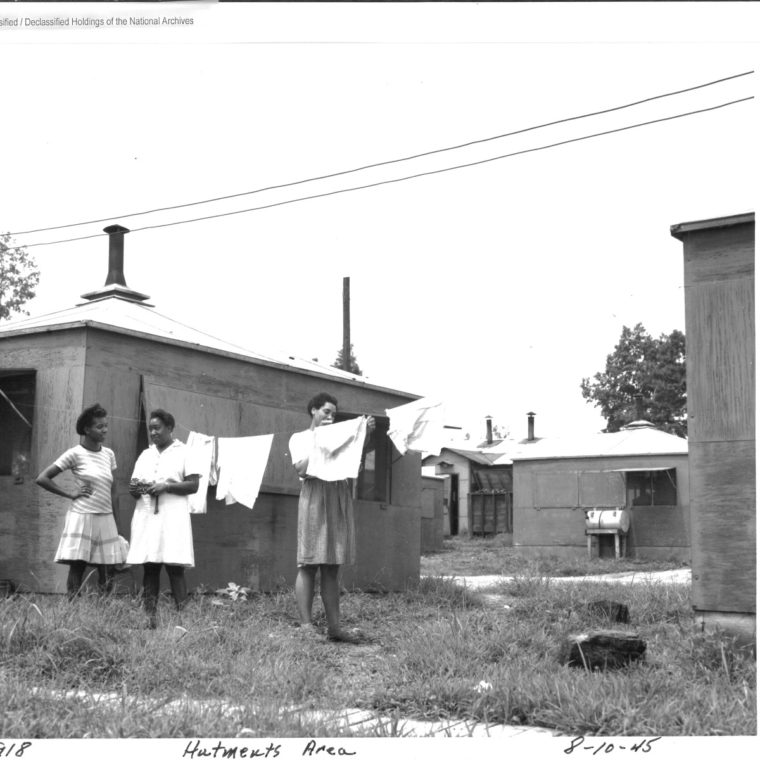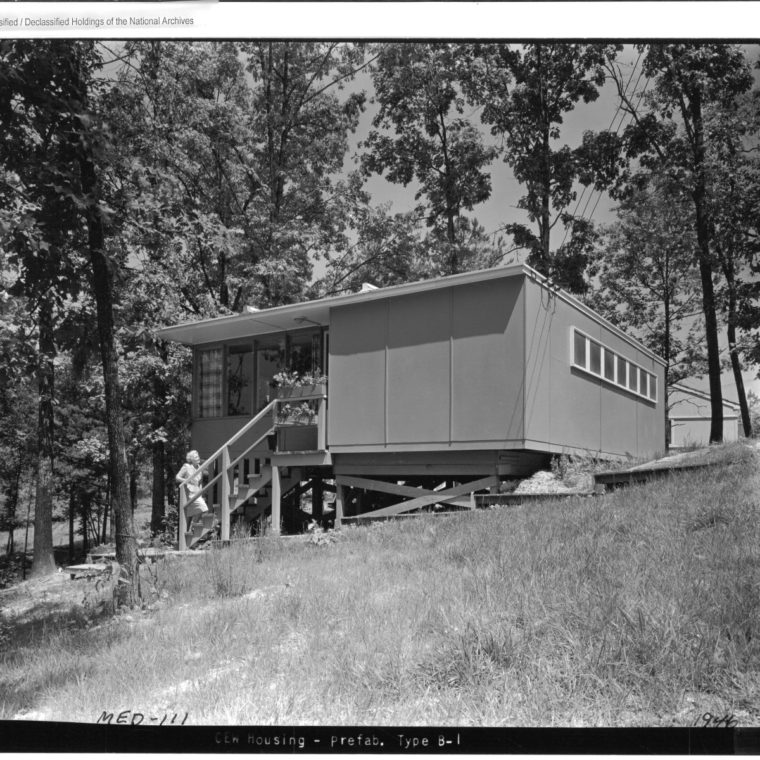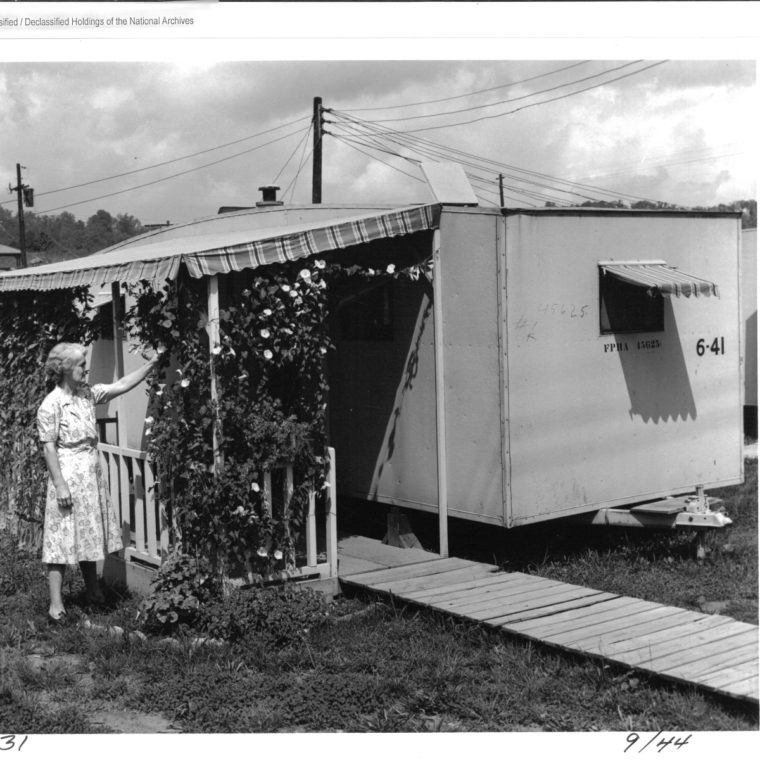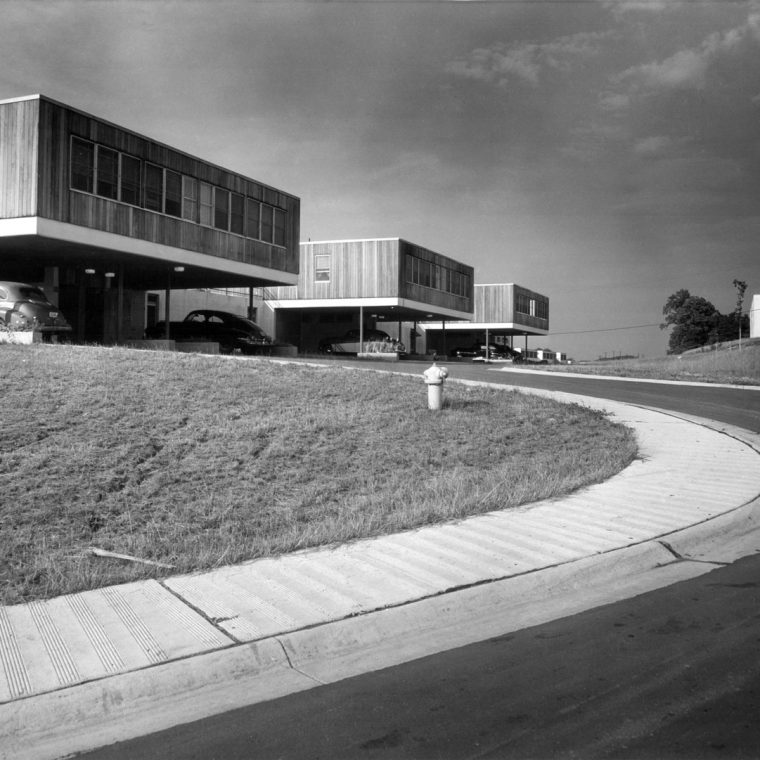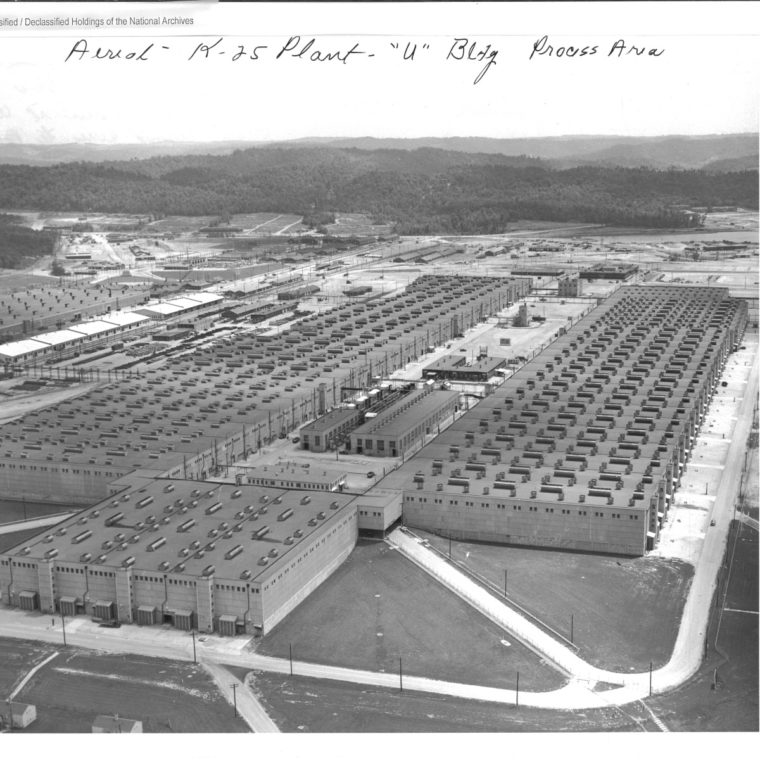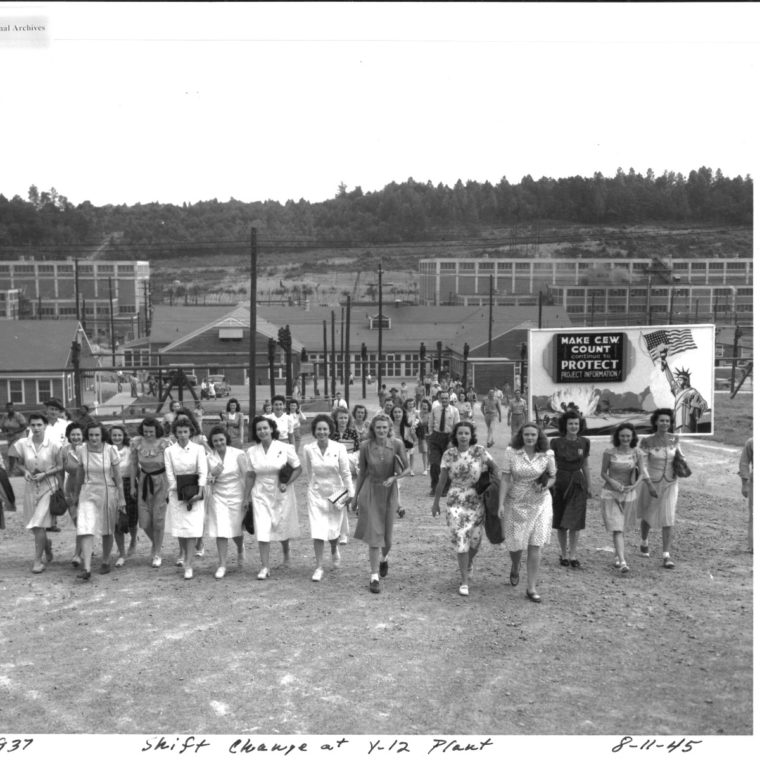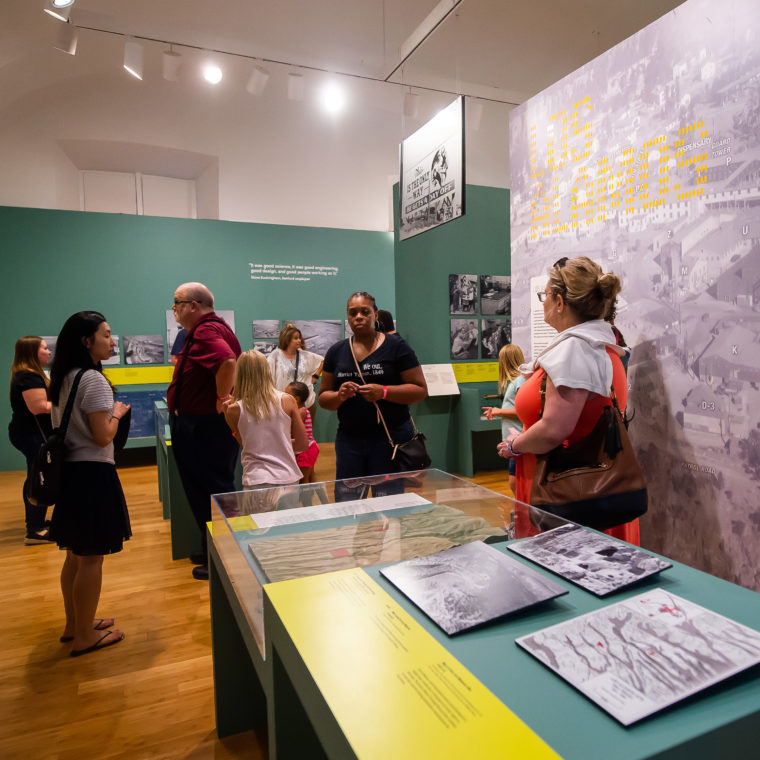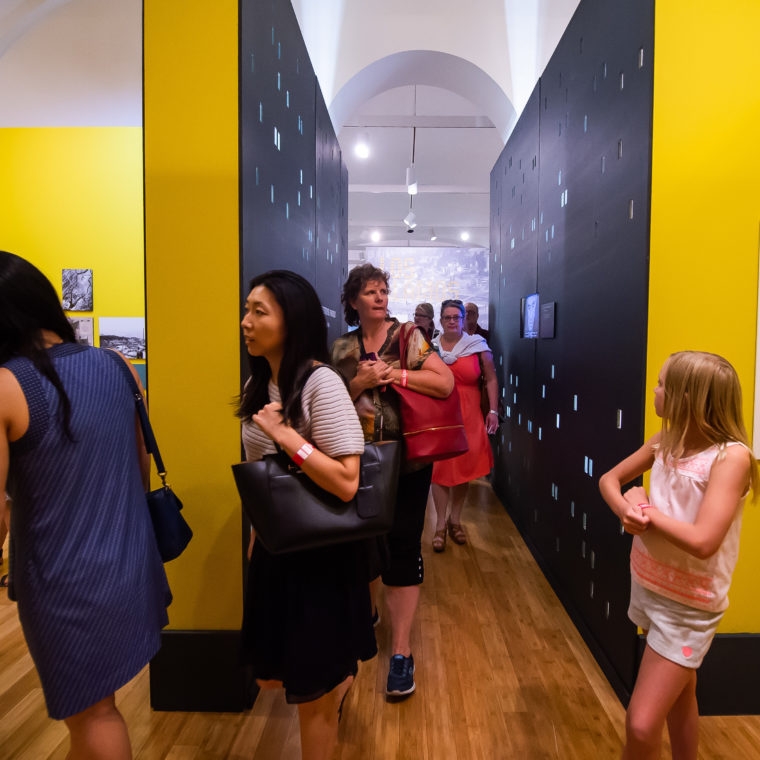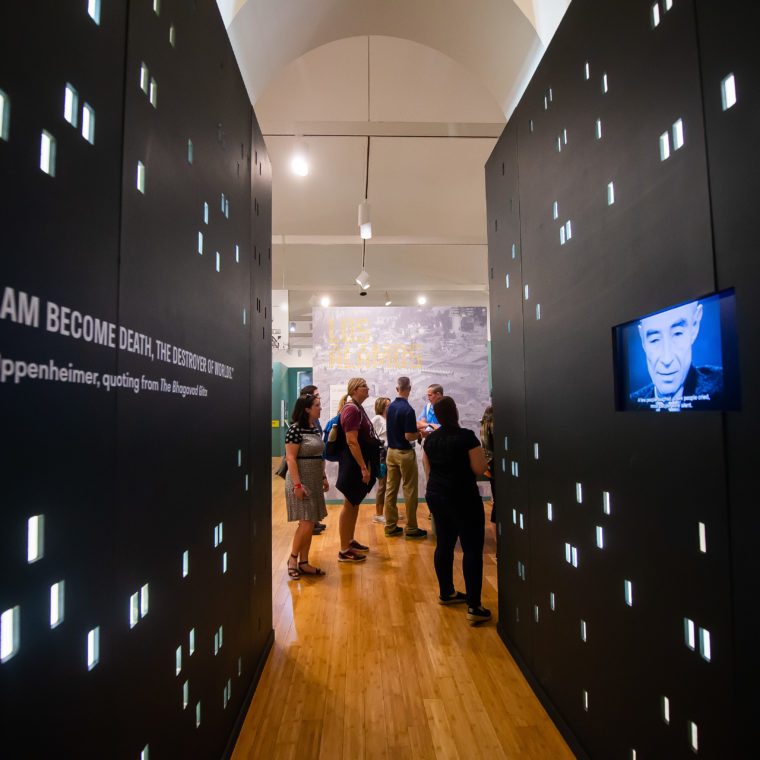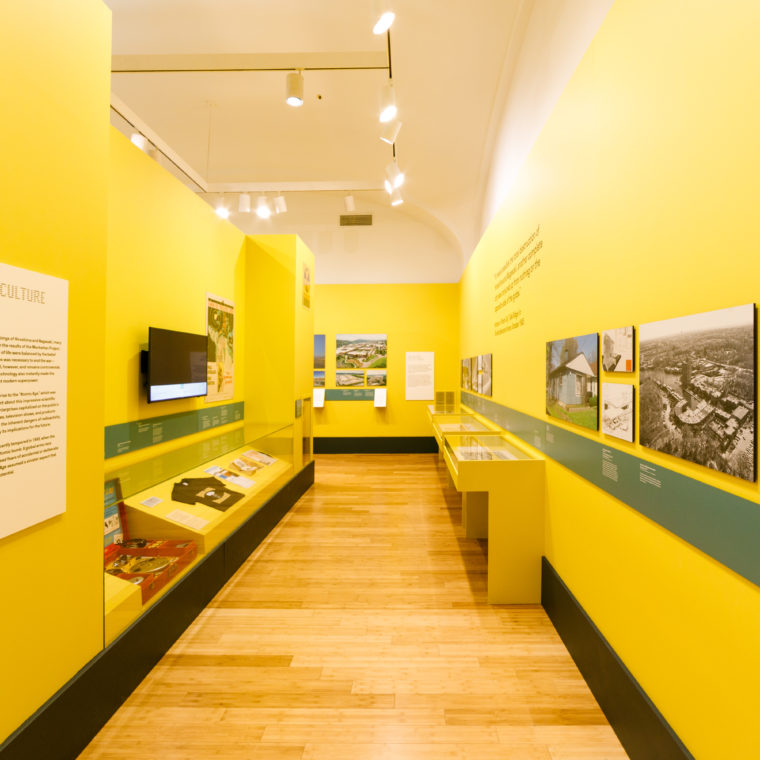The Architecture and Planning of the Manhattan Project
may 3, 2018 – july 28, 2019
Related Content
Follow the conversation:
#SecretCities
The Guardian: “Off the map: the secret cities behind the atom bomb”
Eight books to uncover the Manhattan Project’s secrets
Watch Secret Cities: The Next 75 Years
Secret Cities nominated for Global Fine Arts Award in “Best Design”
The Beginning
In the fall of 1942, less than a year after the United States was drawn into World War II by the Japanese attack on Pearl Harbor, the U.S. Army Corps of Engineers quietly began acquiring vast tracts of land in remote areas of three states. The few residents of these areas were summarily evicted and their houses demolished. Soon, thousands of young workers arrived from far and wide, initially occupying tents and other makeshift shelters within the newly designated military reservations.
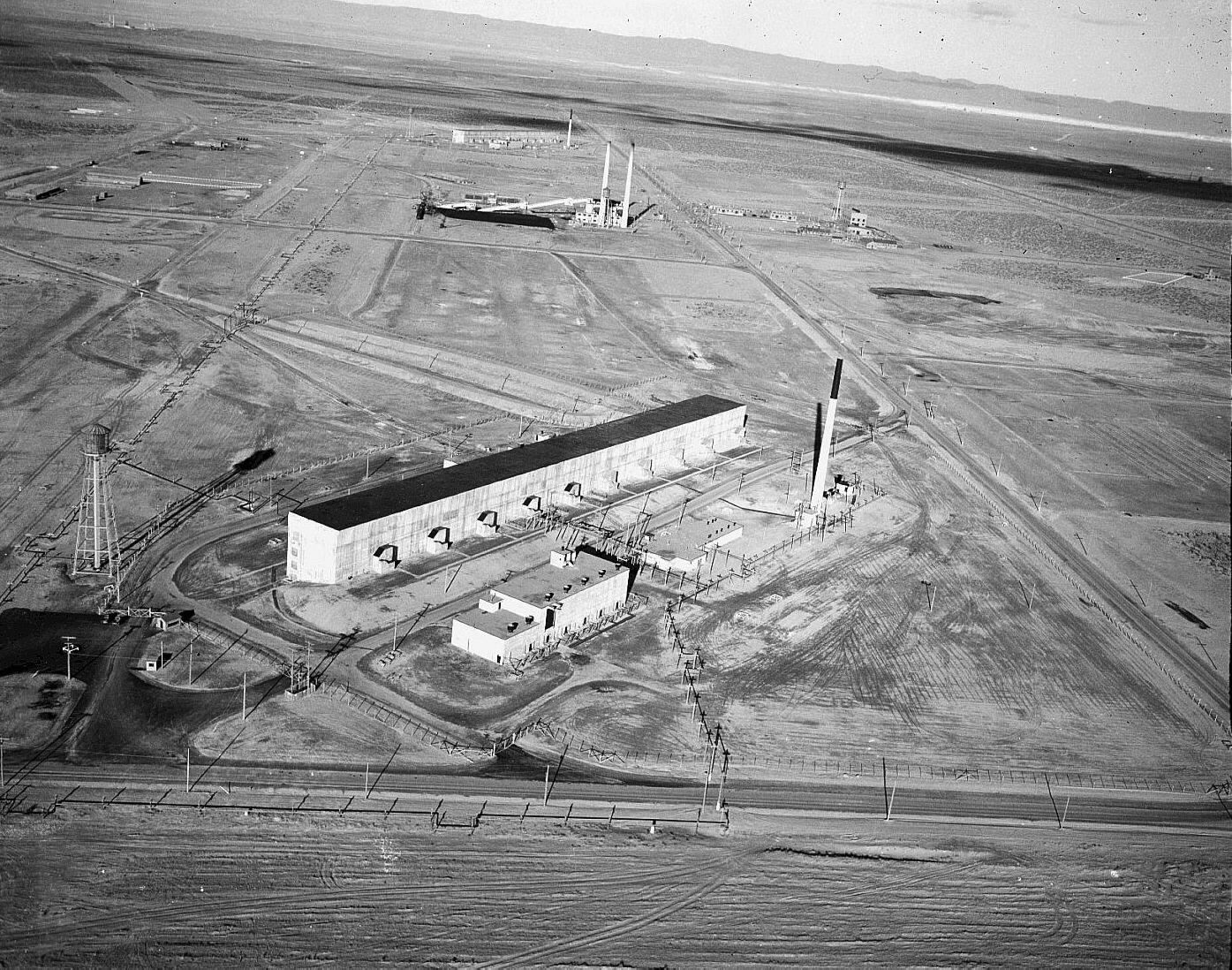
U.S. Department of Energy.
Shielded from public view by natural barriers and security fences, the workers quickly erected hundreds of buildings, ranging from prefabricated houses to industrial structures of unprecedented scale.
As they did so, thousands more residents arrived in a near-continuous stream. By the end of the war, a total of more than 125,000 people lived in the three cities that had been built from scratch on these sites. Yet these cities appeared on no maps, and the federal government did not acknowledge their existence. Unfathomable quantities of supplies were delivered, but very little seemed to come out, adding to the air of mystery surrounding these “Secret Cities.”
Manhattan Project Sites
That mystery unraveled on August 6, 1945, when the U.S. dropped an atomic bomb on Hiroshima, Japan, and President Harry S. Truman publicly revealed the purpose of the sites now known as Oak Ridge, Tennessee; Los Alamos, New Mexico; and Hanford/Richland, Washington. In roughly two and a half years, the Manhattan Project—so named because it was managed by the Army Corps’s Manhattan Engineer District in New York—had produced a weapon of previously inconceivable destructive force. While the ethics and strategic necessity of the decision to use such a weapon in combat are still fiercely debated, there is no question that this initiative was one of the most significant milestones in the history of scientific research and development.
The Manhattan Project would not have been possible without the extraordinary achievements in architecture, engineering, and planning that yielded three entirely new cities in a remarkably short time. Built in the early years of the modern movement, these cities reflected cutting-edge ideas about town planning, mass housing, civil and mechanical engineering, and modular construction. They became important proving grounds for the large-scale suburban development that would dramatically alter the physical and cultural landscape of the nation in the post-war era.
Gallery
The Exhibition
Secret Cities examines the innovative design and construction of Oak Ridge, Hanford, and Los Alamos, tracing their precedents in the Bauhaus and other early modern schools of architectural thought. It looks at daily life within the cities and how it was shaped by their physical form, illuminating the social stratification and segregation that were still evident in these cities despite the high-minded principles underlying their design.
The exhibition addresses each city’s development since the conclusion of the Manhattan Project, and their continuing importance as centers of research and technology, now largely devoted to non-military purposes.
Extensive oral histories of the Manhattan Project are available through the Voices of the Manhattan Project, produced by the Atomic Heritage Foundation.
Sponsors
This exhibition is supported in part by an award from the National Endowment for the Arts. We also gratefully acknowledge Nancy Voorhees; Turner Construction Company; Skidmore, Owings, & Merrill and the Skidmore, Owings, & Merrill Foundation; STUDIOS Architecture; Bechtel; the Graham Foundation for Advanced Studies in the Fine Arts; HDR, Inc.; and ORAU for their generous contributions.


